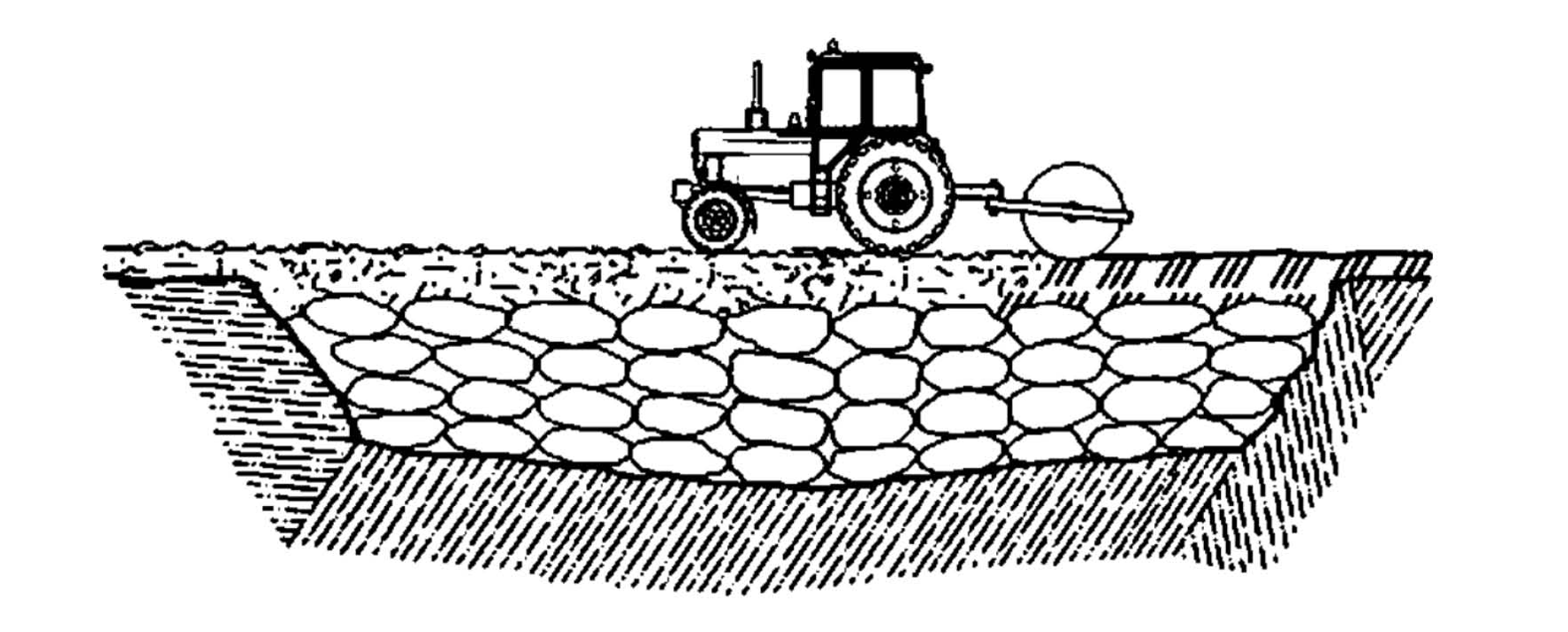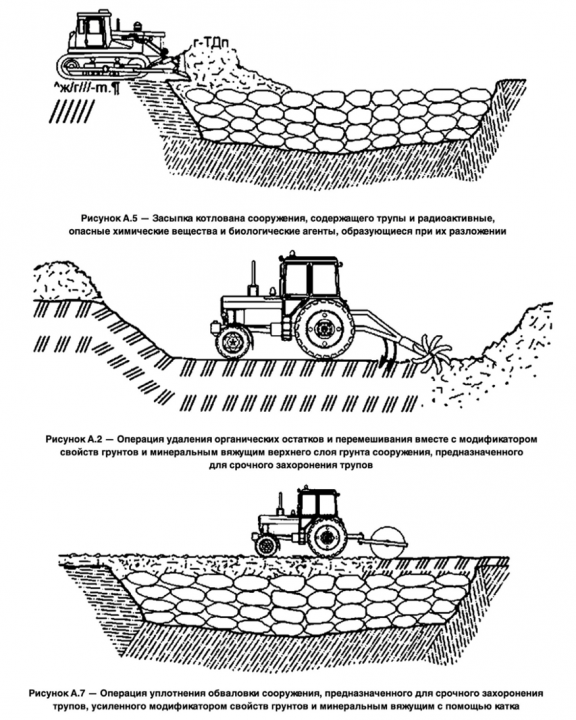Russia’s not-so-subtle policy update raises specter of mass burials
Russian policy document describes new procedures for the mass burial of corpses amidst rising tensions with Ukraine and NATO.
Russia’s not-so-subtle policy update raises specter of mass burials
Share this story

BANNER: Illustration from Russian policy document regarding procedures to bury large numbers of bodies. (Source: allgosts.ru/archive)
As Russia raises the stakes in security talks with the United States, the Kremlin released a document clarifying the norms of “urgent burial of corpses in wartime and peacetime.” The draft, which will come into effect in February 2022, was posted by Russia’s Ministry of Emergency Situations, or EMERCOM.
The rising tension in the relationship between NATO and Russia is already nearing its highest point in decades. The Kremlin recently released a draft list of security demands of the United States and NATO, knowing well that these demands will not be accepted. According to US intelligence reports, a potential military invasion could happen in January or February 2022. The new corpse disposal policy coming into effect in February 2022 adds a not-so-subtle message to an already tense geopolitical situation.
Background
On December 17, 2021, the Russian Ministry of Foreign Affairs announced a draft list of demands with major security implications for NATO and the United States, and called for urgent talks with Washington.
Russia claimed that the list of demands is vital to its security, as conflict with Ukraine might be on the table if the terms are not met. The list covered a variety of specific demands, such as that NATO should not accept any new members from the territory of the former Soviet Union, and that the United States should remove its nuclear weapons from Europe. Also on the list were demands that no new military bases be established in former Soviet states, and that NATO withdraw its battalions from Poland and from the Baltic states.
During a visit to Lithuania on December 19, German Defense Minister Christine Lambrecht announced that Russia cannot dictate to NATO partners “their posture.” Karen Donfried, a senior US State Department official, expressed similar thoughts, saying that “there are things in those documents that the Russians know will be unacceptable.”
Updated burial norms
As the tension continues to increase at the diplomatic level, the Kremlin seems to be sending signals of preparation for a potential conflict on a bureaucratic level as well.
In July 2021, the draft of a document GOST R 42.7.01–2021 “Civil defense. Urgent burial of corpses in time of war and peacetime. General requirements” (ГОСТ Р 42.7.01–2021 Гражданская оборона. Захоронение срочное трупов в военно и мирное время.Общие требования) was uploaded on the official website of EMERCOM, the Russian Emergency Situations Ministry. According to the explanation provided, it is an extension of Article 2 of the Federal Law of February 12, 1998 №28-FZ “On Civil Defense,” which had only limited recommendations on how to deal with the mass burial of corpses. The new policy will come into effect on February 1, 2022.
Kremlin-owned Tsargrad.tv and RBC.ru confirmed that the policy document describes how mass graves should be prepared and equipped, the first such legislative document in Russia to do so. The document also covers explanations on how to calculate potentially unrecoverable losses among the population, and the labor costs of burying a single corpse. According to the official description, this document regulates the actions of the authorities for the rapid organization of mass funerals, such as the burial of the corpses of people and animals killed during military conflicts or as a result of an emergency in peacetime. Detailed illustrations on how to create the mass burial sites were also added to the document.

The official description of the new document mostly uses a nuclear strike as the primary scenario, but states that the mass death of people and animals is possible in large-scale emergencies in peacetime as well. A few examples of such emergencies are provided, including the 1988 Armenian earthquake that left 25,000 dead and the 2010 Haiti quake that resulted in 230,000 deaths.
The official description did not provide specific military conflicts as examples, but Moscow-based independent military analyst Alexander Golts warned in Novye Izvestia that the scale of the situation described the document would apply to either “a global epidemic or a global war.” The same article also cited retired Russian Colonel-General Leonid Ivashov, who argued that the rhetoric expressed in the mass-grave policy is risky and ultimately plays into the hands of the US.
Cite this case study:
Lukas Andriukaitis, “Russia’s not-so-subtle policy update raises specter of mass burials,” Digital Forensic Research Lab (DFRLab), December 23, 2021, https://medium.com/dfrlab/russias-not-so-subtle-policy-update-raises-specter-of-mass-burials-fdd02552bf5d.

